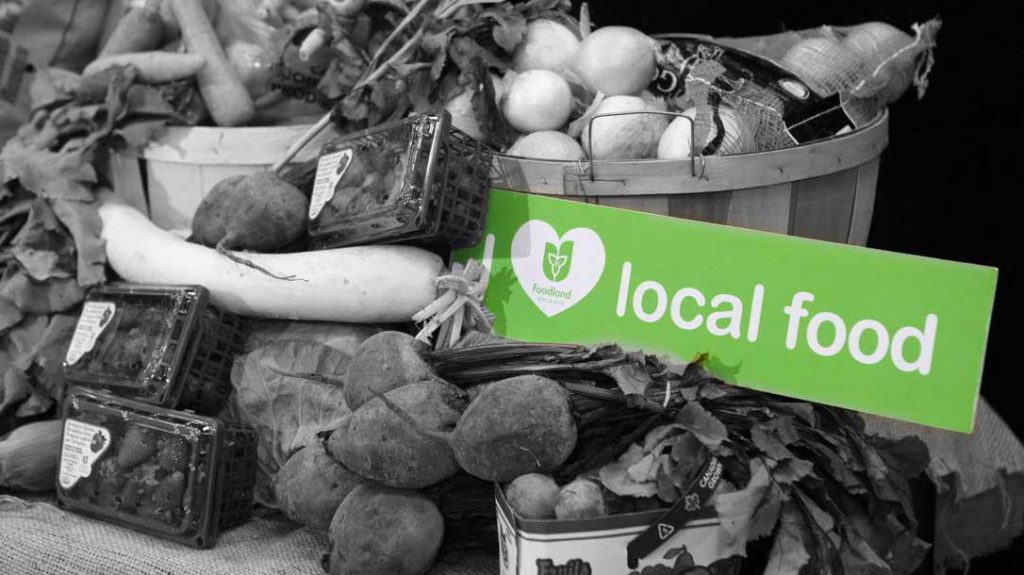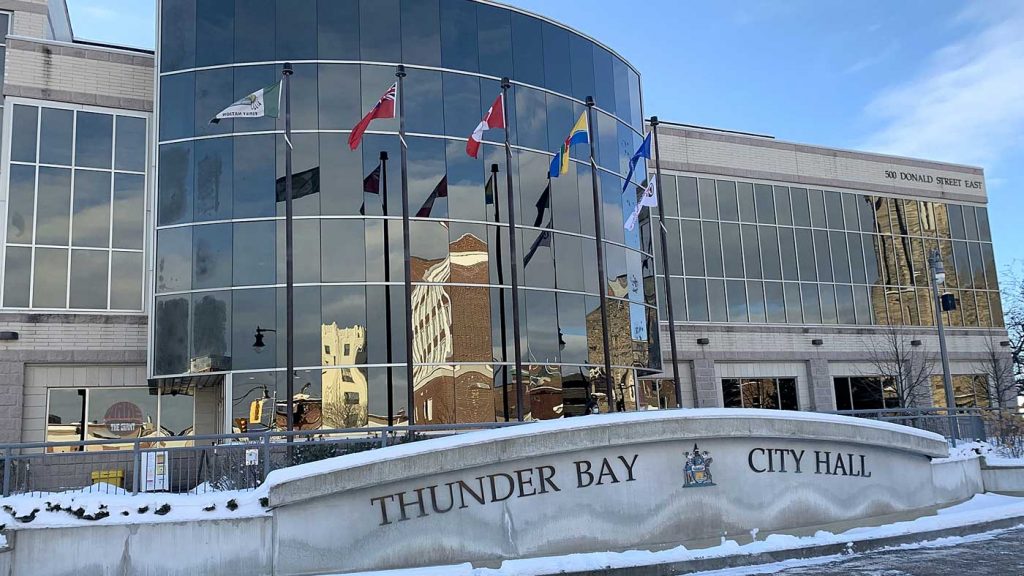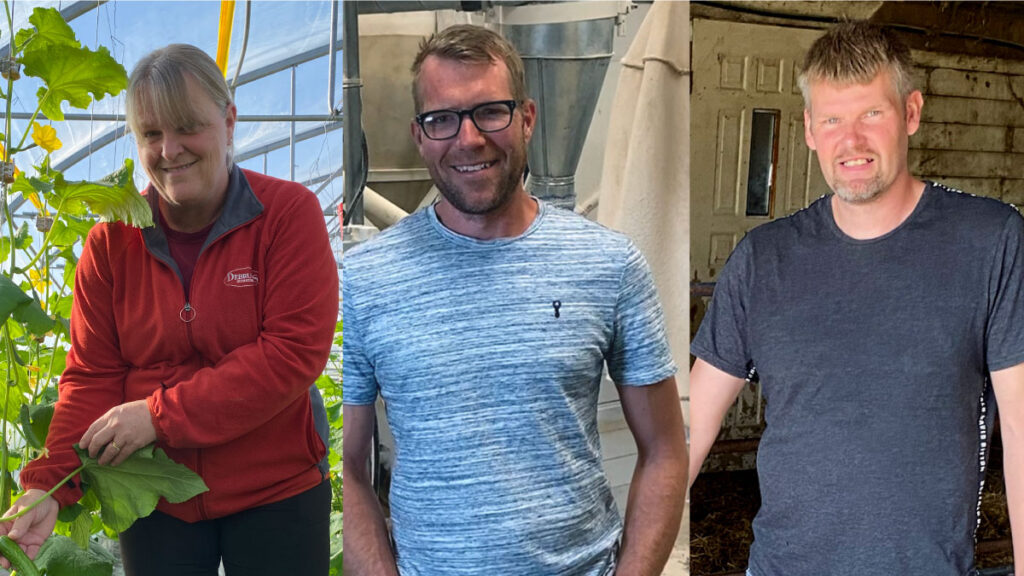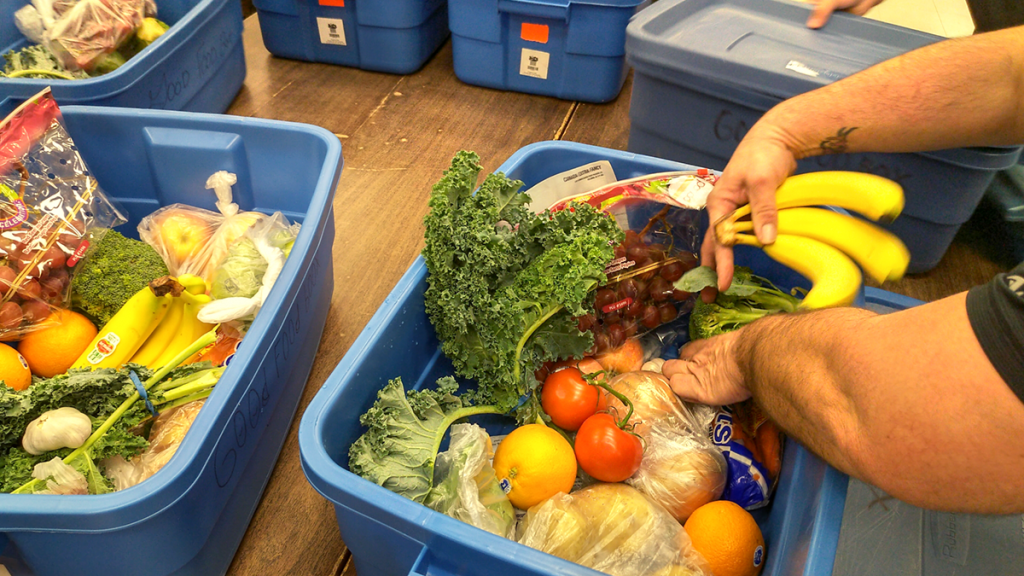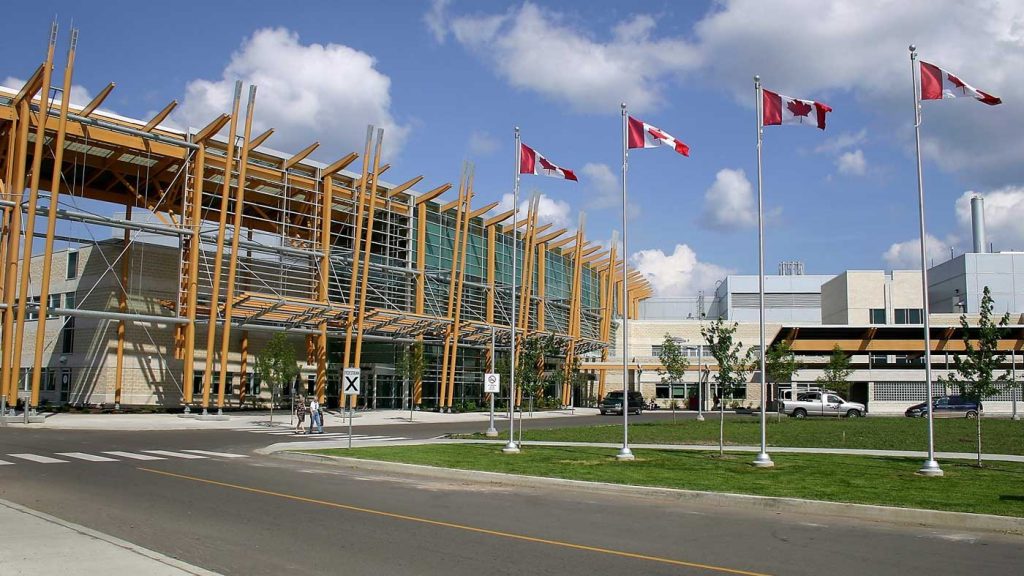Food Procurement

GOAL:
Leverage procurement food spending to develop a public sector food supply chain that contributes to the economic, ecological and social well-being of the Thunder Bay Area through food purchases that foster local and regional production and harvesting, processing, and distribution.
What are the Issues Around Food Procurement in the Thunder Bay Area?
Due to the emergence of centralized distributors, the loss of local food infrastructure, and the dominance of corporate food service companies, food is now sourced from all over the world. This means that within the Thunder Bay Area, the rest of Ontario, and much of Canada, public dollars used for buying food for hospitals, daycares and other public sector institutions are not being spent on food businesses that would benefit the local economy.
This is a serious oversight when we consider that the Broader Public Sector (BPS) plays a significant role in the food economy and has significant buying power. The Ontario healthcare system alone serves an estimated 115,000,000 meals to patients every year, with the value of food in all those meals estimated to be over $285,000,000. 1 In 2014, BPS institutions in the Thunder Bay Area spent approximately $10 million on food. 2 Shifting even 10% of purchases to locally grown and processed foods would create a $1 million market for food producers, harvesters and processors. Public institutions have the potential to use their significant purchasing power to invest in local agriculture and forest and freshwater foods, while providing opportunities to other local food entrepreneurs along the supply chain.
Throughout Canada and many other countries, the consumption of local foods within the BPS is being promoted as a means to scale-up local food systems and enhance local economic development. Locally, awareness is increasing among the public, the BPS, restaurants and businesses that buying local means tangible economic benefits. This increased awareness is generating growing demand, market opportunities and greater capacity—all of which is enhancing the local economic development cycle.
Local food not only has economic benefits, but often also means more culturally appropriate, nutritious, fresher, and tastier food. The BPS is responsible for the health and well-being of many people, including students, the elderly and those in healthcare institutions. Sourcing local food is therefore a way to raise the bar towards offering good food to a wide range of people. Buying food closer to the source would also mean reducing greenhouse gas emissions that come from shipping food long distances.
What Does “Local Food” Mean Anyway?
Local food is difficult to define. Oftentimes institutions talk about local as meaning food grown in Ontario. Other times the term “local” is used to talk about food from Northwestern Ontario or food from around Thunder Bay. The Thunder Bay + Area Food Strategy does not currently have a definition of local food because there has not yet been a process to decide where the boundary of local/non-local lies, or how this would be verified.
All that said, one of the goals of the Thunder Bay + Area Food Strategy is to foster local economic development. Local food is therefore generally taken to mean food grown and processed in and around the Thunder Bay Area. Food grown or harvested in Northwestern Ontario is thought of as “regional” and food from elsewhere in the province as an Ontario product.
Measures of local food procurement
Number of health care facilities purchasing food from farms within 100 kilometers of Thunder Bay (2022)
1+
Measured: 2022
Source: Thunder Bay + Area Food Strategy. (2022). Community Food Security Database. 3
Number of daycares purchasing food from farms within 100 kilometers of Thunder Bay (2022)
7+
Measured: 2022
Source: Thunder Bay + Area Food Strategy. (2022). Community Food Security Database. 4
Amount spent by the City of Thunder Bay with farms within 100 kilometers of Thunder Bay (new for 2022)
$242,000
Measured: 2020
Source: Munshaw, Dan. (2022). City of Thunder Bay. Personal Communication. 5
Number of postsecondary institutions purchasing food from farms within 100 kilometers of Thunder Bay (2022)
0
Measured: 2022
Source: Thunder Bay + Area Food Strategy. (2022). Community Food Security Database. 7
Number of schools purchasing food from farms within 100 kilometers of Thunder Bay (2022)
1+
Measured: 2022
Source: Thunder Bay + Area Food Strategy. (2022). Community Food Security Database. 8
Number of high schools with a “Get Fresh Cafe” farm to cafeteria program (2022)
3 *
*closed during COVID
Measured: 2021
Source: Stephens, Airin. (2022). Roots Community Food Centre. Personal Communication. 7
Number of farm to cafeteria events (2022)
N/A – COVID
Measured: 2021
Source: Stephens, Airin. (2022). Roots Community Food Centre. Personal Communication. 8
Number of meals served through the farm to cafeteria program (2022)
N/A COVID
Measured: 2020
Source: Beagle, Erin. (2022). Roots Community Food Centre. Personal Communication. 11
Number of restaurants purchasing food from farms within 100 kilometers of Thunder Bay (new for 2022)
16+
Measured: 2022
Source: Thunder Bay + Area Food Strategy. (2022). Tbayinseason.ca Local Food Database. 12
Number of processors purchasing food from farms within 100 kilometers of Thunder Bay (new for 2022)
18+
Measured: 2022
Source: Thunder Bay + Area Food Strategy. (2022). Tbayinseason.ca Local Food Database. 13
Number of Indigenous organizations and communities purchasing food from farms within 100 kilometers of Thunder Bay (new for 2022)
8+
Measured: 2022
Source: McLaughlin, Jessica. (2022). Indigenous Food Circle, Gaagige Zaagibigaa. Personal Communication. 14
Food Access groups purchasing food from farms within 100 kilometers of Thunder Bay (new for 2022)
2+
Measured: 2022
Source: Thunder Bay + Area Food Strategy. (2022). Community Food Security Database. 15
What do the 2022 Food Procurement Indicators Tell Us?
Institutional procurement of local food in this area has been driven by the efforts of the Corporation of the City of Thunder Bay. Over the past 15 years the City has become an advocate for locally produced foods, having endorsed the Thunder Bay Food Charter (2008), the Community Environmental Action Plan (2008), and the Thunder Bay + Area Food Strategy (2014). The City has adopted a Sustainable Ethical Environmental Purchasing Policy (2011) and was awarded two Greenbelt Fund grants in 2012 and 2013 to help shift purchasing policies towards more local food.
Under the first Greenbelt grant, the City increased purchasing of local food by 2% in one year. A main takeaway from this project was that it challenged the assumption that public sector institutions cannot buy local food. Up until that point, it was generally believed that the volumes, consistent supply, and health and safety requirements could not be met by producers from the area. Under the second Greenbelt Fund project, the City increased purchasing of local food by 10% in one year for its three Homes for the Aged and four daycares.
Today, the City of Thunder Bay operates one long-term-care home and four daycares, all of which continue to use local products on their menus. Pioneer Ridge Long-term Care Home now spends 30% of its raw food budget on local foods, injecting an additional $300,000 into the local economy every year. 16
In 2015, five health-care facilities reported procuring local food. Today, Pioneer Ridge is the only large institution (including post-secondary institutions) in the area maintaining a commitment to local food targets. Some of this can be attributed to the disruptive effects of the COVID-19 pandemic, which caused some buyers to simplify, but in other cases these initiatives have failed due to changes in personnel and a lack of the policy direction and operational processes which have made local food a permanent part of Pioneer Ridge’s food service.
One of the realities of the modern food system is that many institutions have outsourced management of food services to foodservice corporations. These companies have their own distribution networks that source primarily from outside Ontario. Local food content is often difficult to identify through mainline distributors until after the product is delivered. Smaller institutions like daycares and schools also have challenges around sourcing local food since they require such low volumes. 17 Since many growers are doing their own distribution, it can be hard for small institutions to make the case for deliveries.
Another challenge institutions face when it comes to purchasing local food is that the supply of local food is limited by the shorter growing season and smaller scale production in the immediate area. Some institutions require such large volumes that they cannot substitute their purchases entirely with food from the area, adding a layer of complexity to their meal planning.
To address this, Pioneer Ridge Long-term Care Home has developed processes around menu planning and ordering which incorporate local products on a year-round as well as on a seasonal basis, making their use both straightforward and consistent.
This challenge could also be addressed from the supplier side with the addition of storage, processing, and mechanization on farms that would help growers reach greater volumes and at a more competitive price point. Another option could be for producers and harvesters not producing enough on an individual basis to fill orders collectively.
Procurement stakeholders want product to be aggregated and pre-processed whenever possible before it arrives at their door in one convenient delivery. Making menu substitutions is difficult when labour costs go up as raw food preparation takes more time. Having the option of buying pre-processed local foods (e.g., washed, chopped, frozen, and bagged) appears to be a necessary component of a successful local food system. Integrating local food into institutional menus would also occur sooner if food service staff were trained in how to source and prepare locally-sourced foods and make menu substitutions using food from the area. 18
Ideally, as the public sector moves towards buying from closer to home, they will also begin tracking their purchases more closely. At the moment, it appears that the COVID-19 pandemic has had a limiting effect on the local food ambitions of Thunder Bay’s institutions, and there is very little information on the volumes or dollars purchased. Having this information will be key in measuring progress over the long term.
How Much Local Food Is Being Bought?
There is little by way of data tracking volumes of local food purchased by public sector institutions, restaurants, and caterers. Generally this information is not requested by institutions. There is anecdotal information, however, about a growing number of children’s daycare centres and community organizations like Roots Community Food Centre and the Good Food Box which are making concerted, consistent efforts to purchase from local producers whenever possible.
Food Procurement Highlights
15% Food Budget Increase for Ontario’s Long-term Care Homes
In July 2022, new regulations were adopted in Ontario under the Fixing Long-Term Care Act, 2021 that provide long-term care homes with a 15% funding increase to nutritional support.
City seeks Indigenous-led partners in food
The purchasing model developed by the City of Thunder Bay has built-in criteria that considers more than just price, assigning value to diversity, inclusion, social justice and sustainability.
City of Thunder Bay’s Pioneer Ridge Long-Term Care Home Buys 30% Local Food
New policies & processes automatically include year-round and seasonal ingredients and foster the development of relationships with new growers
Working with a Broader Public Sector Institution – Farmer Feedback
From COVID stability to shared product expertise, feedback from the three farmers we asked about their experiences supplying Pioneer Ridge was very positive.
Food Access Programs Using Local Food
Institutions are not the only ones starting to buy local food. Organizations involved in food access initiatives are trying to do their part to support farmers from the area too. As food prices go up, local food is also becoming more cost competitive. In 2015, the...
Thunder Bay Regional Health Sciences Centre
The Regional Hospital continues to use locally grown potatoes in their menu. This past year they began using large whole carrots from a local farm and added a homemade soup to the menu using locally grown cabbage. The Regional Hospital is also host to a farmers’...
City of Thunder Bay Buys Into Local Food
Over 2014 the Thunder Bay and Area Food Strategy worked with the City on a local food procurement project that aimed at increasing that amount of local food being sourced by the City’s Homes for the Aged and daycares by 10%. Following this, the City identified 6...
2022 Food Procurement References
- Wylie-Toal, B., et al. (2013). Local Food Provision in Ontario’s Hospitals and Long-Term Care Facilities.
- Bevilaqua, C., (2014). City of Thunder Bay Supply Management, Personal Communication, March 14, 2014.
- Thunder Bay + Area Food Strategy. (2022). Community Food Security Database.
- Thunder Bay + Area Food Strategy. (2022). Community Food Security Database.
- Munshaw, Dan. (2022). City of Thunder Bay. Personal Communication.
- Munshaw, Dan. (2022). City of Thunder Bay. Personal Communication.
- Thunder Bay + Area Food Strategy. (2022). Community Food Security Database.
- Thunder Bay + Area Food Strategy. (2022). Community Food Security Database.
- Beagle, Erin. (2022). Roots Community Food Centre. Personal Communication.
- Beagle, Erin. (2022). Roots Community Food Centre. Personal Communication.
- Beagle, Erin. (2022). Roots Community Food Centre. Personal Communication.
- Thunder Bay + Area Food Strategy. (2022). Tbayinseason.ca Local Food Database.
- Thunder Bay + Area Food Strategy. (2022). Tbayinseason.ca Local Food Database.
- McLaughlin, Jessica. (2022). Indigenous Food Circle, Gaagige Zaagibigaa. Personal Communication.
- Thunder Bay + Area Food Strategy. (2022). Community Food Security Database.
- Munshaw, Dan. (2022). City of Thunder Bay. Personal communication.
- Roy, R., (2014). Appendix E: Growth Opportunities in Thunder Bay’s Food Infrastructure, Research Report. Prepared by Beanstalk Consulting as part of the City of Thunder Bay and Food Action Network Broader Public Sector Education Strategy Implementation Project, Summary Report.
- Roy, R., (2014). Appendix E: Growth Opportunities in Thunder Bay’s Food Infrastructure, Research Report. Prepared by Beanstalk Consulting as part of the City of Thunder Bay and Food Action Network Broader Public Sector Education Strategy Implementation Project, Summary Report.


